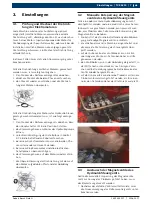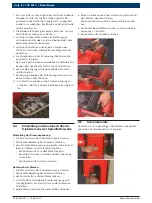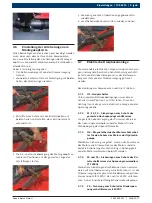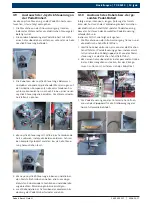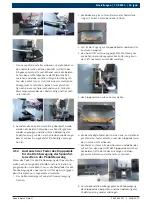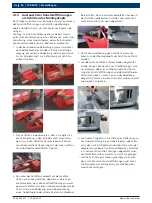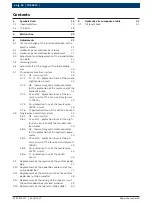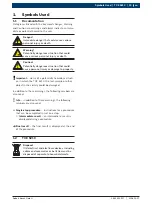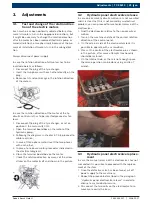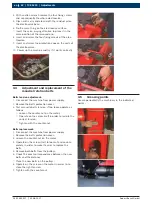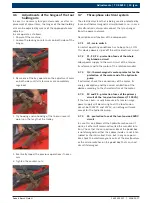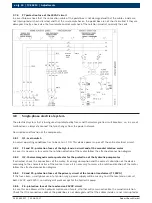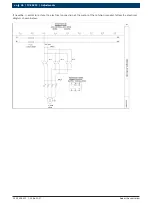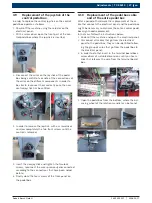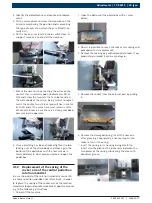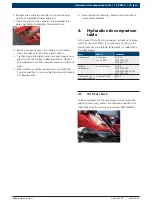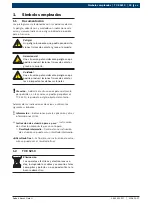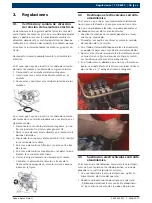
1 695 400 317
2008-10-17
|
Robert Bosch GmbH
Adjustments | TCE 5210 | 21
en
Adjustments
3.
Test and change of the rotation direc-
3.1
tion of the electric motors
Each machine as been optimally adjusted before ship-
ment (all motors turn in the appropriate direction), but
it might be necessary to change the rotation direction
after the motor has been replaced (hydraulic pump or
mandrel rotation), or maybe simply because at the mo-
ment of installation all motors turn in the wrong direc-
tion.
Always disconnect power supply.
In case the rotation direction of all motors has to be
inverted operate as follows:
Disconnect the plug of the tyre changer;
1.
Invert the two phases with each other directly on the
2.
plug;
Reconnect it and control again the rotation direction
3.
of the motors.
In case the rotation direction of the motor of the hy-
draulic control unit has to be inverted proceed as fol-
lows:
Disconnect the plug of the tyre changer, or set on
1.
position 0 the main switch Q1;
Open the terminal board box on the motor of the
2.
hydraulic pump;
Following the diagrams in chapter 3.7-3.8
3.
proceed to
cable reversion;
In case of three-phase motor invert the two phases
4.
with each other;
In case of one phase motor proceed as indicated in
5.
the electrical diagrams;
Close the terminal board box on the motor;
6.
Check the rotation direction by means of the arrow
7.
sticker on the motor itself and shown in the picture.
Hydraulic panel electrovalve release
3.2
In case one or more hydraulic motions are not executed
and it is clear that this is not caused by an electrical
problem, you can proceed to mechanical release of the
electrovalves.
Find the electrovalve relative to the non executed
1.
motion;
Turn on the machine and check the correct rotation
2.
direction of the control panel;
On the external side of the electrovalves lock it is
3.
possible to operate with a screwdriver;
Press at the centre of the electrovalve pin as shown
4.
in the picture, after some attempts functionality
should be restored;
On the internal side, as there is not enough space,
5.
the same operation can be done using an allen T
wrench.
Hydraulic panel electrovalve replace-
3.3
ment
In case the manual release of the electrovalves has not
succeeded it is possible to proceed with the replace-
ment of the item.
Once the defective valve has been found, cut off
1.
power supply to the machinery;
Repeat the procedure described in the paragraph
2.
“Hydraulic panel electrovalve release” in order to
eliminate any residual pressure;
Disconnect the two coils on the electrovalve to re-
3.
move more easily the item;

